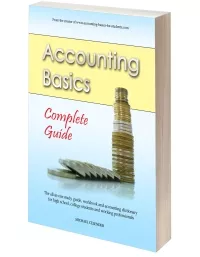Journal Entry for Recovery of Bad Debts?
Question:
Q: What is the double entry for recording recovery of bad debts in control accounts?Solution:
First of all, let's make sure we understand what bad debts are.Bad Debts
 Bad debts are debts owed to the business that have gone bad.
Bad debts are debts owed to the business that have gone bad.In other words, you don't think Joe Shmoe is going to pay you the $1,000 he owes you as he just declared bankruptcy or something like that.
What do you do? You record this unpaid debt as a loss, and we call this Bad Debts.
Here's the journal entry for recording this bad debt:
Dr Bad Debts ......................... $1,000
Cr Debtors Control ......................... $1,000
Note that the credit here is for the debtors account (also known as accounts receivable). What this means is that our debtors are less, which makes sense as we are not expecting as much money to be received anymore.
Recovery of Bad Debts
Now let's go over the journal entry for recording the recovery of bad debts. Let's say that 2 years later Joe Shmoe's new business is doing well and he has money again and he is forced to pay you some of the money he owed you before (let's say $600). The money he pays you is now recorded as an income and we use the term Bad Debts Recovered.
Let's say that 2 years later Joe Shmoe's new business is doing well and he has money again and he is forced to pay you some of the money he owed you before (let's say $600). The money he pays you is now recorded as an income and we use the term Bad Debts Recovered.Here's the journal entry:
Cr Bad Debts Recovered (income) ......................... $600
As you can see, the entry above actually does not affect the debtors control account at all (you don't have to show that more is owing to us now). It is simply a recording of cash received, with the contra entry being an income account.
Technically if the debt was recoverable but not paid immediately, then you could record it in two steps:
Dr Debtors Control ......................................... $600
Cr Bad Debts Recovered ......................................... $600
Dr Bank ............................................................ $600
Cr Debtors Control .................................................. $600
This is the same as above except the money is first owed to us and then paid a bit later.
Note for US visitors, that the entries above for bad debts and bad debts recovered are using what is known as the "Direct Write-Off Method" (as opposed to an alternate method called the "Allowance for Bad Debts" method).
Hope that all makes sense!
See below for more comments, questions and answers on recovery of bad debts. And feel free to add your own.
- Michael Celender
Accounting Basics for Students
FYI full lessons and exercises on bad debts (and provision for bad debts) are only available in my basic accounting books, not on this site.
Related questions and tutorials:
Click here for more Full Accounting Questions and Answers
Comments for Journal Entry for Recovery of Bad Debts?
|
||
|
||
|
||
|
||
|
||
|
||
|
||
|
||
|
||
|
||
© Copyright 2009-2021 Michael Celender. All Rights Reserved.
Click here for Privacy Policy.




